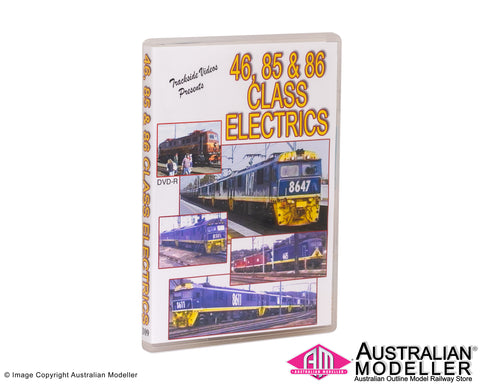Setting aside for the moment the locally built 4501 (later renumbered 7100), a box shaped 2800HP experimental prototype assembled by the New South Wales Government Railways (NSWGR) with similar Metropolitan-Vickers’ electrical equipment to gain experience with electric traction and train crew on such, NSWGR first production main line electric locomotive, 4601, built by Metropolitan Vickers in Manchester, UK, arrived by ship at Pyrmont in May 1956 with the last of the order for 40 arriving December 1958. These 3780HP locomotives were intended to handle the expanding export coal traffic from the Western Coal Fields.
Ordered some 5 years earlier to allow associated infrastructure (overhead wiring, electrical substations etc.) to be completed, on arrival it was found the expected coal movements from the west had been greatly overestimated, leaving some of the locomotives surplus to requirements. Additional locomotives were also freed up with the arrival of the ‘U Boat’ self propelled interurban cars in 1958. Therefore NSWGR, pleased with electric traction, looked for other possible lines to be electrified including to Gosford and beyond to Newcastle on the Short North, Wollongong/Port Kembla on the South Coast and Campbelltown/Glenlee Colliery on the Main South. As a result of all of the above, electrification was ultimately completed to Gosford in 1960, Campbelltown/Glenlee in 1968, Newcastle 1984 and Wollongong/Port Kembla in 1986.
By the late 1970s it was evident more electric locomotives would be needed. The State Rail Authority (SRA), which had superseded the NSWGR, ordered 10 3860HP 85 Class electric locomotives from Commonwealth Engineering and the first of these Mitsubishi equipped locomotives arrived in 1979. To cut costs, SRA decided not to equip them with ‘backward transition’. The subsequent 50 of the very similar 86 Class from Comeng did come, starting in 1983, with this feature which made them much easier to handle in the steep and undulating country areas. 8650 was the only unit delivered with a different bogie configuration (Bo-Bo-Bo) which caused waves within the SRA. 85 and 86 could be operated together on heavy goods trains provided an 85 Class was in the lead.
The changes to the SRA, which lead to the entity being partially privatised and split into different operating bodies, lead to the demise of the environmentally friendly electric fleet. Asked by the Rail Infrastructure Corporation (RIC) to pay more as a contribution to the cost of the overhead wiring and supporting infrastructure, Freight Corp, which superseded SRA, elected to move to an all diesel electric fleet and the writing was on the wall for the electrics. Most of the 46 Class were cut up at Simms Metal at Mascot whilst Silverton bought many 85/86 Class, hoping to on-sell them or their equipment to high voltage DC users, but most were cut up for scrap. Fortunately between Sydney Electric Train Society (SETS), the New South wales Rail Transportation Museum (NSWRTM) and a number of other preservation groups at least one of each of the four classes has been preserved.
This presentation gives details of interior and exterior features of the 46, 85, and 86 Class locomotives and covers operation of these electric locomotives on the Main West and South Coast Lines between Port Kembla and Lithgow.
Approximate run time: 104 minutes.

